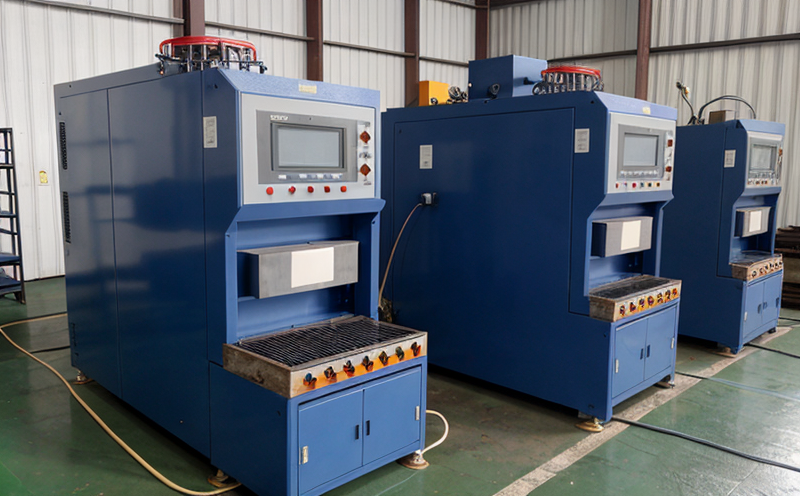ISO 105 Jute Fiber Colorfastness Testing
The ISO 105 standard is a globally recognized set of guidelines used to assess the colorfastness of materials, ensuring that textiles and fabrics maintain their color integrity under various environmental stressors. Within this framework, ISO 105 D, specifically pertains to the evaluation of the resistance of fibers and yarns to light fading.
Jute is a natural fiber derived from the bark of the jute plant. It is widely used in industrial manufacturing due to its strength, durability, and sustainable nature. However, one key challenge with using jute for various applications is ensuring that it retains its color during processing and throughout its lifecycle. This is where ISO 105 Jute Fiber Colorfastness Testing plays a critical role.
The testing procedure involves exposing samples of jute fibers or yarns to specific light sources under controlled conditions, simulating real-world exposure to sunlight. The color change and fading are then quantified using standardized methods. This process is essential for manufacturers who rely on jute to produce products like ropes, bags, and upholstery.
The testing protocol ensures that the colorfastness of jute meets international standards, providing a reliable measure of quality and durability. For industrial manufacturing processes involving jute, this test helps in selecting appropriate raw materials that will perform consistently across different stages of production.
Compliance with ISO 105 is particularly important for industries that are subject to strict regulatory requirements or those aiming to meet customer expectations regarding product longevity and environmental sustainability. By adhering to these standards, manufacturers can ensure their products remain aesthetically appealing and functional over time.
The process typically involves preparing samples according to the specified dimensions outlined in the ISO 105 D standard. These samples are then exposed to artificial light sources designed to replicate natural sunlight exposure. The degree of color change is measured using spectrophotometric instruments, providing quantifiable data on how well the jute maintains its original color.
Understanding the results from this test allows manufacturers to make informed decisions about their supply chain and production processes. For instance, if the test indicates that certain batches of jute have poor colorfastness properties, adjustments can be made in sourcing or processing methods to improve future outcomes.
In summary, ISO 105 Jute Fiber Colorfastness Testing is an indispensable tool for ensuring consistent quality control within industrial manufacturing processes involving natural fibers like jute. It helps maintain the aesthetic appeal and functional integrity of final products while also contributing positively towards sustainability goals by reducing waste associated with subpar materials.
Why It Matters
The importance of ISO 105 Jute Fiber Colorfastness Testing cannot be overstated, especially in industries where raw material quality directly impacts product performance and customer satisfaction. Ensuring that jute maintains its color integrity throughout processing enhances the overall value proposition of end products made from this natural fiber.
For industrial manufacturers dealing with jute-based materials, consistent compliance with ISO 105 not only boosts brand reputation but also facilitates smoother relationships with customers who expect high standards in terms of product quality and longevity. Additionally, adhering to these international norms helps companies navigate global markets more effectively by meeting stringent regulatory requirements across various jurisdictions.
Moreover, from an environmental perspective, maintaining the colorfastness of jute contributes significantly to waste reduction efforts within manufacturing operations. By preventing premature degradation due to improper handling or exposure conditions, industries can extend product lifecycles, thereby reducing resource consumption and minimizing landfill burdens associated with discarded goods.
In essence, ISO 105 Jute Fiber Colorfastness Testing serves as a cornerstone for quality assurance practices in industrial settings. It ensures that jute fibers used in manufacturing processes meet not only aesthetic but also functional expectations set by both industry standards and end-user requirements.
Benefits
- Achieves Consistency: Ensures uniformity in colorfastness across all batches of jute, leading to more reliable product performance.
- Promotes Customer Satisfaction: By meeting international standards, manufacturers can offer products that exceed customer expectations regarding durability and appearance.
- Increases Market Competitiveness: Compliance with ISO 105 enhances a company’s position in competitive markets by demonstrating commitment to excellence in manufacturing practices.
- Saves Resources: Extended product lifecycles result from improved colorfastness, reducing the need for frequent replacements and ultimately lowering overall resource consumption.
Environmental and Sustainability Contributions
The implementation of ISO 105 Jute Fiber Colorfastness Testing aligns closely with broader sustainability goals within industrial manufacturing. By ensuring that jute retains its color integrity, manufacturers contribute to minimizing waste generation associated with discarded products due to poor quality or aesthetics.
This testing process supports efforts aimed at reducing environmental impact by promoting the use of sustainable materials like jute in place of synthetic alternatives. The durability provided through enhanced colorfastness ensures that jute-based products can be used longer, thus extending their lifecycle and reducing the demand for new raw materials.
Furthermore, compliance with ISO 105 contributes to responsible sourcing practices by encouraging suppliers to provide high-quality jute that meets stringent quality benchmarks. This approach fosters a more sustainable supply chain where both producers and consumers benefit from prolonged product usability and reduced environmental footprint.
In conclusion, the adoption of ISO 105 Jute Fiber Colorfastness Testing is crucial for fostering an environmentally conscious industrial sector. It underscores the importance of rigorous quality control measures in maintaining the integrity of natural fibers while driving towards more sustainable manufacturing processes.





